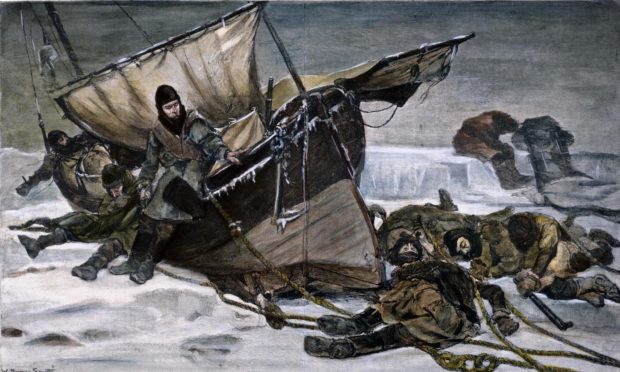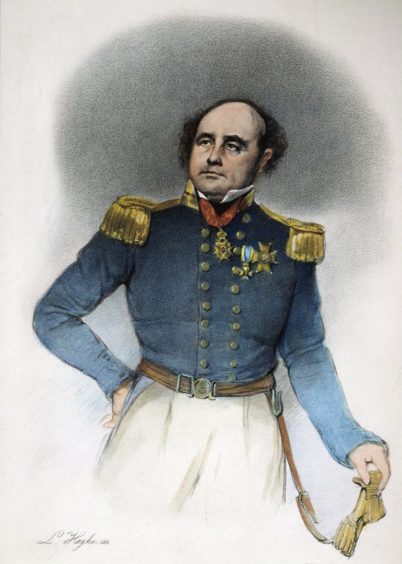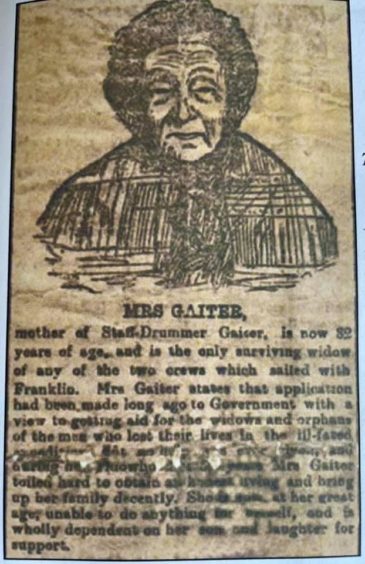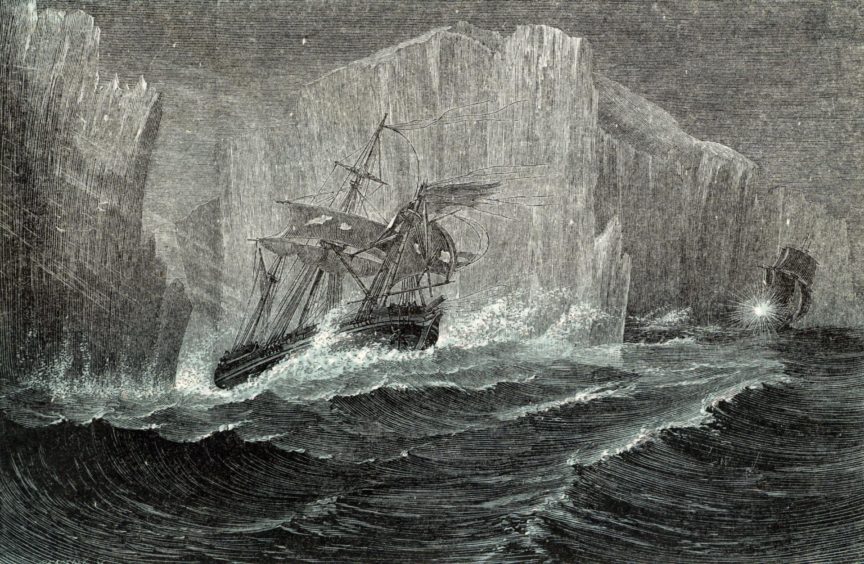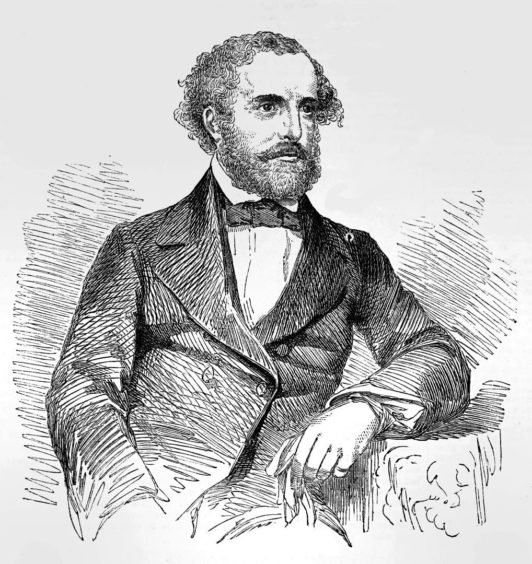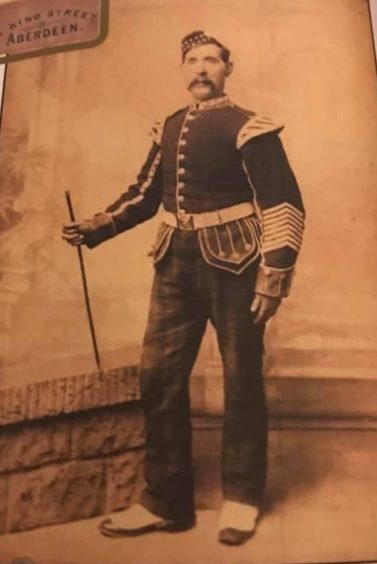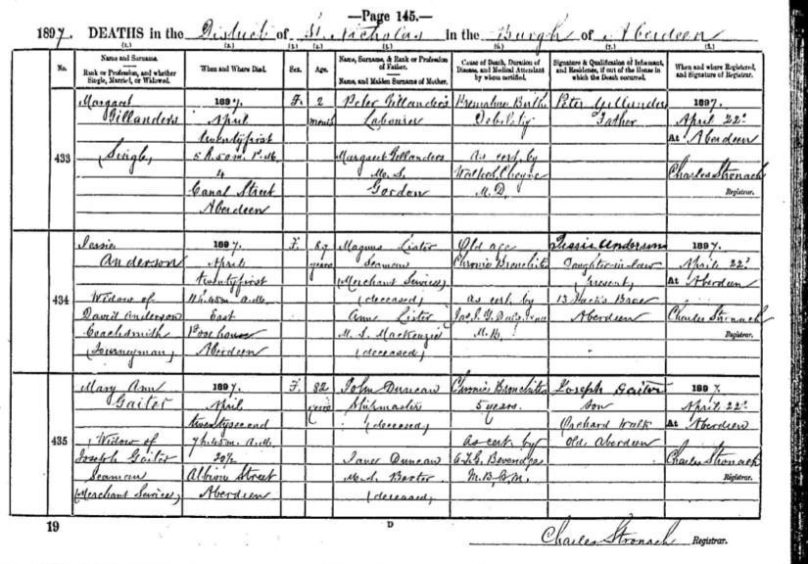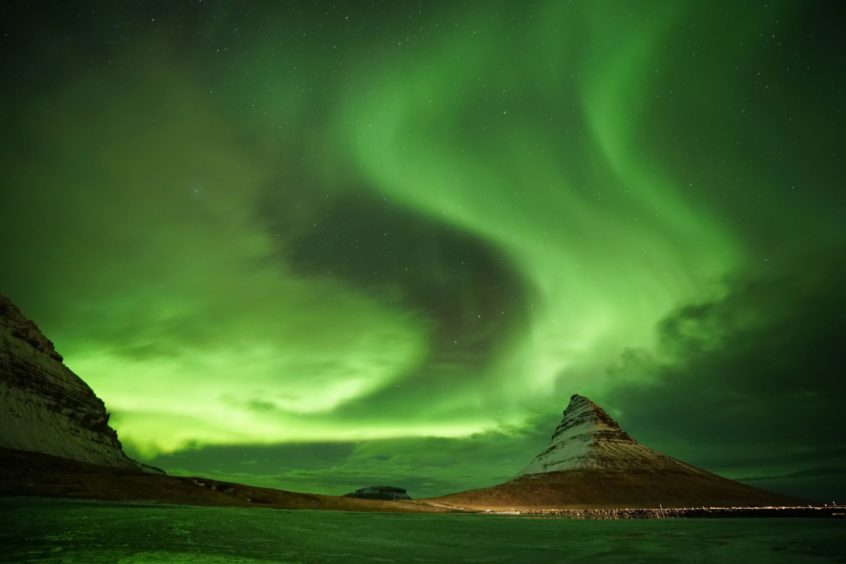She runs an international charity foundation with her husband, so Fiona Cormack is used to dealing with people across the world.
And even as she and Dave, the chairman of Aberdeen FC, continue to take an interest in all things Aberdeen-related from their home in Florida, she is also aware of the many links between the Granite City and the United States.
Yet even Mrs Cormack, nee Styles, has been intrigued by the findings of her cousin, Scott – a senior lecturer in law at Aberdeen University – who has delved into their family tree and unearthed the remarkable tale of her great great grandfather Josephus Gaiter.
An experienced sailor, he was one of the north-east men who joined up for Sir John Franklin’s ill-fated expedition in search of the North West Passage in 1845, which is currently being chronicled in the big-budget TV drama The Terror from the hands of Alien and Gladiator director Ridley Scott.
It was a doomed crusade, one which led to the vessels HMS Terror and HMS Erebus being trapped in pack ice which gradually, inexorably, squeezed the life out of the sailors and eventually forced some of the crew to resort to cannibalism.
But let’s go back to the day in 1895 when a diminutive elderly lady stepped into the office of the Aberdeen Journal and told the newspaper her memories of Josephus.
The widow had an extraordinary story to tell
Mrs Mary Ann Gaiter, who was 81 but blessed with a sharp memory, related how her husband had been born in the Whitechapel region of London, but his family relocated to Stonehaven when he was just six weeks old.
He spent his boyhood in the little coastal community, where he soon developed a taste for seafaring and exploration and, as a teenager, was apprenticed on board the Glentann – an Aberdeen-owned brig which made regular journeys to America.
This peripatetic character subsequently served as a second mate on the North Star, one of the trading vessels which travelled between Inverness, Aberdeen, Leith and London.
And it was while he was on shore leave in the Granite City that Josephus met and fell in love with Mary Ann Duncan, the daughter of the ship’s captain.
The Aberdeen Journal said: “Ten years of happily married life had been spent by the couple [who had four children], when, attracted by the adventure which the expedition promised and the pecuniary inducements held out, Gaiter volunteered for service on board the Erebus and left his home for London on April 15 1845.”
“That was the last I saw of him,” said the widow, with a sorrowful shake of her head.
The crew sailed off to their gruesome fate
Mrs Gaiter had been left with a young family to look after, but she understood that her husband needed to find gainful employment.
But, even half a century later, she spoke with a melancholy sadness about the months and then years where she knew nothing of her husband’s travails in the grim Arctic wilderness.
The Journal added: “On May 15 1845, the Erebus and Terror sailed and Mrs Gaiter remembers, as if it were yesterday, seeing the ships pass through Aberdeen Bay on their disastrous journey. The last that was heard of Josephus was the news contained in a letter written by himself from Greenland to his brother Frederick. In that communication, he stated that he was ‘quite well’ and ‘very comfortable’.
“He added that Sir John was ‘exceedingly kind’ and that the crew liked him very much.”
But Mrs Gaiter said: “The months dragged wearily, wearily by when we heard no word of the expedition, but still we hoped that news of the safety of the explorers would be brought to us at some stage in the future.”
There was no reward for the families of the lost
It wasn’t until 1857 that the vessel Fox, commanded by Francis Leopold McClintock, embarked on an expedition, financed by Lady Jane Franklin, to try to find her husband and the missing crew members, and their records of where they had been.
By that stage, the Orkney-born surgeon and explorer, Dr John Rae, had already traversed the North West Passage and had outlined his analysis of what had happened to the Erebus and Terror, which was gleaned from his investigations with the assistance of the indigenous Inuit people.
He also revealed that some of the desperate men had resorted to cannibalism and this scandalised British society in the Victorian era. (Although, as further findings materialised, he was proved correct).
However, Lady Franklin refused to believe these allegations and continued to sponsor trips to the Arctic to search for the men who had perished in terrible circumstances.
She even journeyed to Out Stack in the Shetland Islands, the northernmost part of Britain, to get as close as she could to her husband.
She also visited some of the wives and families of the crew, including Mrs Gaiter in Aberdeen, who recalled: “Well do I remember taking my lassie’s han’ – she was a wee bairnie then – and going to the lady who lived in Mrs Yule’s lodgings in Union Street.
“When I was shown into her presence, she spoke kindly to us and expressed the hope that we might have our dear ones back again in at least three years.”
But this was a protracted exercise in clutching at straws and, despite the recovery missions, Mrs Gaiter and her family found themselves struggling to make ends meet.
As the Journal said in 1895: “An application was made long ago to the Government with a view to getting aid for the widows and orphans of the men who lost their lives, but no help was ever given and, during her widowhood of 50 years, Mrs Gaiter has toiled hard to obtain an honest living and bring up her family decently.
“Two of her family are dead, but her daughter, Susan, is employed in a warehouse in the city and her son, Joseph, is a member of the permanent staff of the 3rd Battalion Gordon Highlanders, among whom he has been since boyhood. He resides in barracks in King Street and is well known as a prominent member of the battalion band.”
That might have been the end of the story. But the opposite is the case.
Styles find substance in recalling their ancestor
Fiona Cormack and Scott Styles have both been spellbound by the fashion in which their family ties stretch back even before the days of the Erebus and Terror expedition.
The former, who has been actively involved in her and her husband’s foundation, which has helped many north-east organisations including Robert Gordon University, Maggie’s Centre and Clan Cancer Support, spoke about her mixed feelings at the prospect of watching Ridley Scott’s drama The Terror.
Mrs Cormack said: “Josephus was my great great great grandfather and my cousin, Scott Styles, and my nephew, Niall Fuller, have been researching the family’s links to this rather eerie episode in history and told me about it.
“It has been really fascinating finding out more. My father was called Peter Gaiter Styles, so we now know where this [the name] comes from.
“I will be taking a keen interest in the new drama series, although I am not looking forward to the scenes of cannibalism and other gruesome details.”
The mysterious affair of Styles
Scott Styles is among those who have examined why there are so many people with the same surname as him in Aberdeen. And it all springs directly from the Terror link.
He explained: “Fiona and I – and, basically, everyone in Aberdeen born Styles – are both direct descendants of Josephus.
“Our grandfather was Peter Gaiter Styles, which was also the name of Fiona’s father, his father had the same name and his mother was Susan Gaiter, the daughter of Josephus Gaiter which makes Josephus, who died in the Arctic, our great great great grandfather.
“Susan had 11 children by a man called Charles Styles which explains why there are several families called Styles in Aberdeen.
A poignant thought about the Northern Lights
Mr Styles spoke in poignant fashion about his family’s connections with one of the most grim, yet courageous chapters in British exploration.
It is a subject which has clearly captured his imagination: the story of the three Aberdonians – James Reid, ice master on the Erebus, Alexander MacDonald, assistant surgeon on the Terror, and his descendant Josephus Gaiter.
He said: “The fate of the Terror and Erebus fascinated the Victorians and it continues to fascinate us today with a steady stream of books and the Ridley Scott TV series.
“Then there is the fact that Josephus’ widow spent the rest of her life in poverty bringing up her two surviving children. The government awarded the crew a posthumous Polar Medal, but no pension [for the surviving families].
“I find it fascinating the name Gaiter was given to Josephus’ grandchildren and was used for three generations in the family including my grandfather Peter Gaiter Styles and my late uncle who bore the same name in 1985 as his ancestor who died in 1846.
“How often, as he slowly froze in the Arctic must Josephus have thought of his wife and children who were waiting for him in Aberdeen.
“Perhaps the Northern Lights of the Arctic might have reminded him of home.”
The Terror is being shown on BBC2 on Wednesdays and is on the BBC iPlayer.
